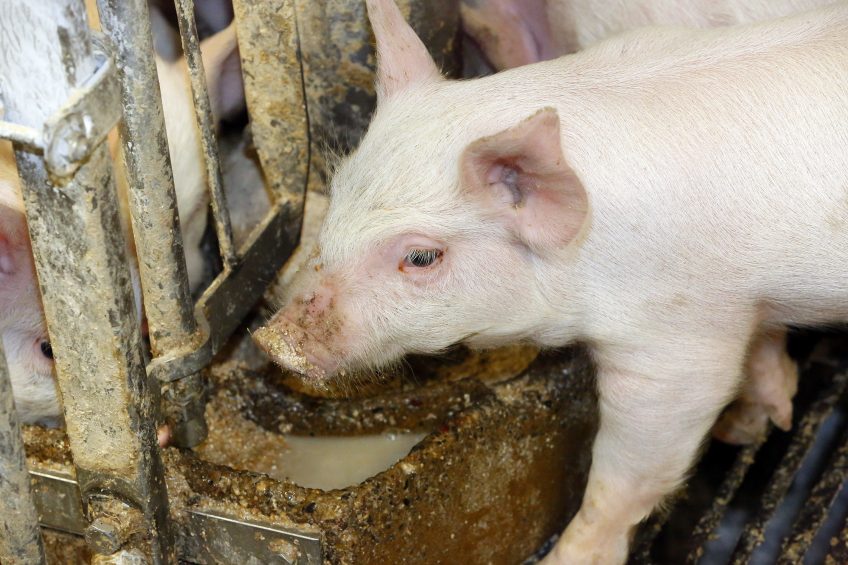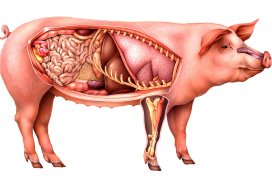Should colistin be banned for pigs?

Colistin has become the antibiotic of last resort in certain circumstances in human medicine, after 40 years of animal health use – should it be banned in animals and only reserved for human use? That is the conundrum, writes pig health expert David Burch.
Should colistin be banned in animals? This is a difficult question but such a proposal is being put forward by various lobbying and medical groups. In veterinary medicine, colistin has been used mainly by the oral route in feed and in drinking water for controlling Escherichia coli infections in pigs, calves and also in poultry.
Colistin is not absorbed by the pig gut
Colistin is not absorbed from the gut so concentrates there and is an exceptional product for controlling diarrhoea and bowel oedema in pigs, associated with E. coli and generally has demonstrated very little resistance development over the years, in comparison with many other antibiotics that we use.
Infections with E. coli in animals can be very serious, not only causing diarrhoea but death due to dehydration and in young susceptible animals, like piglets, septicaemia (proliferation in the blood stream). In poultry, E. coli is a very common secondary respiratory infection following initial viral or mycoplasma infections and the septicaemic form and death is common, if untreated.
Fluoroquinolones in poultry
This is why fluoroquinolones are more commonly required to treat acute poultry infections, as they are absorbed from the intestines to treat blood-borne infections but they are also classed as critically important antibiotics in man. I was therefore surprised that so much colistin was used in chickens.
In man, the World Health Organisation (WHO) has just issued a report called ‘Global Antimicrobial Resistance Surveillance System’ (GLASS) to get the world monitoring antimicrobial resistance in a coordinated way, see Table 1. It highlights the major areas of concern with regard to bacterial infections.
It also identifies where colistin is the critical drug of last resort, because they have developed resistance to other critical antibiotics, such as carbapenems that are not used in veterinary medicine and where resistance development is primarily due to human dependence and occasionally over-use.
Case-finding surveillance system
The data on antimicrobial resistance are collected through a case-finding surveillance system, which collates results of priority specimens from blood, urine, faeces, as well as cervical and urethral specimens.
The major area of resistance in man where carbapenem resistance is a developing problem involves Acinetobacter spp, Klebsiella pneumoniae and E. coli and this is where potential colistin resistance development is considered critical – as a drug of last resort. These infections can lead to blood infections in man, which can also cause death, especially in the old and young, like in piglets, hence the deep medical concern.

In a recent survey published only recently by F. El Garch and others (2018), a total of 11,980 EU isolates of E. coli and Salmonella spp from pigs, chickens and cattle, between 2002 and 2014, were tested for colistin resistance and only 2.6% of isolates were found to be resistant.
New colistin resistance gene
Recently, there was a report of a new colistin resistance gene that could be transmitted by plasmids from one bacterium to another, called the mcr-1 gene. This was discovered to be widespread in China in both pigs and poultry, as it was reported that large amounts of colistin were used for both therapeutic and growth promotion purposes.
Another 4 resistant genes, now mcr1-5 have since been identified. However, there are also resistant genetic mutants of the bacteria, which can block the antibiotic effect of colistin but these are not transmitted between bacterial species but the resistance can be spread in clones of these bacteria to patients.
Klebsiella pneumoniae infections
This clonal spread has been noted in carbapenem resistant K. pneumoniae infections in London hospital patients, as was shown by J.A. Otter and others in this publication from 2017. In the El Garch study, only 2.0% of the animal isolates were colistin resistant and 0.6% was linked to the mcr-1 gene, so the threat of plasmid spread is much lower, see Table 2.
Countries that had a reported high usage of colistin like Spain and Germany tended to have a higher level of overall colistin resistance in comparison with a low user like the UK, at 5.1%, 3.7% and 0.7%, respectively and 1.3%, 1.8% and 0.0% for mcr-1-like resistance.
Targets for use reduction
The EU has set targets for use reduction and it is hoped that this will have a major beneficial effect over time. In the UK, the use of colistin has fallen substantially, especially now that the product has moved from category 1 to category 2, in the EU and should only be used after other drugs have failed and it is shown to be the drug of choice by sensitivity testing.
This demonstrates that the EU agricultural industry can behave responsibly; we do not use antibiotics as growth promoters (since 2006) and antibiotic use is under veterinary supervision and control. The UK, through the help of the Responsible Use of Medicines in Agriculture (RUMA) Alliance has also set usage reduction targets for the next 5 years, to catch up with Denmark and the Netherlands.

Read more about pig health in the
Pig Progress Health Tool
One Health approach to control antibiotic resistance
Therefore, in the spirit of support of the ‘One Health’ approach to controlling antibiotic resistance, the agricultural industry can and is playing a role to support the use of antibiotics in human medicine, without the need to ban them and put their own production in jeopardy. If these older generic products are lost, it is unlikely that the pharmaceutical industry will invest in restoring them. We hope that new antimicrobials will be developed for human medicine, which will relieve the pressure.
Unfortunately, we know that some of these will be based also on existing medicines used in animal health. The USA has started to follow the EU model, in its own way. It is 1 year down the track and we wait to see the impact. It is hoped that other WHO-linked countries will consider proceeding along these lines in due course.











